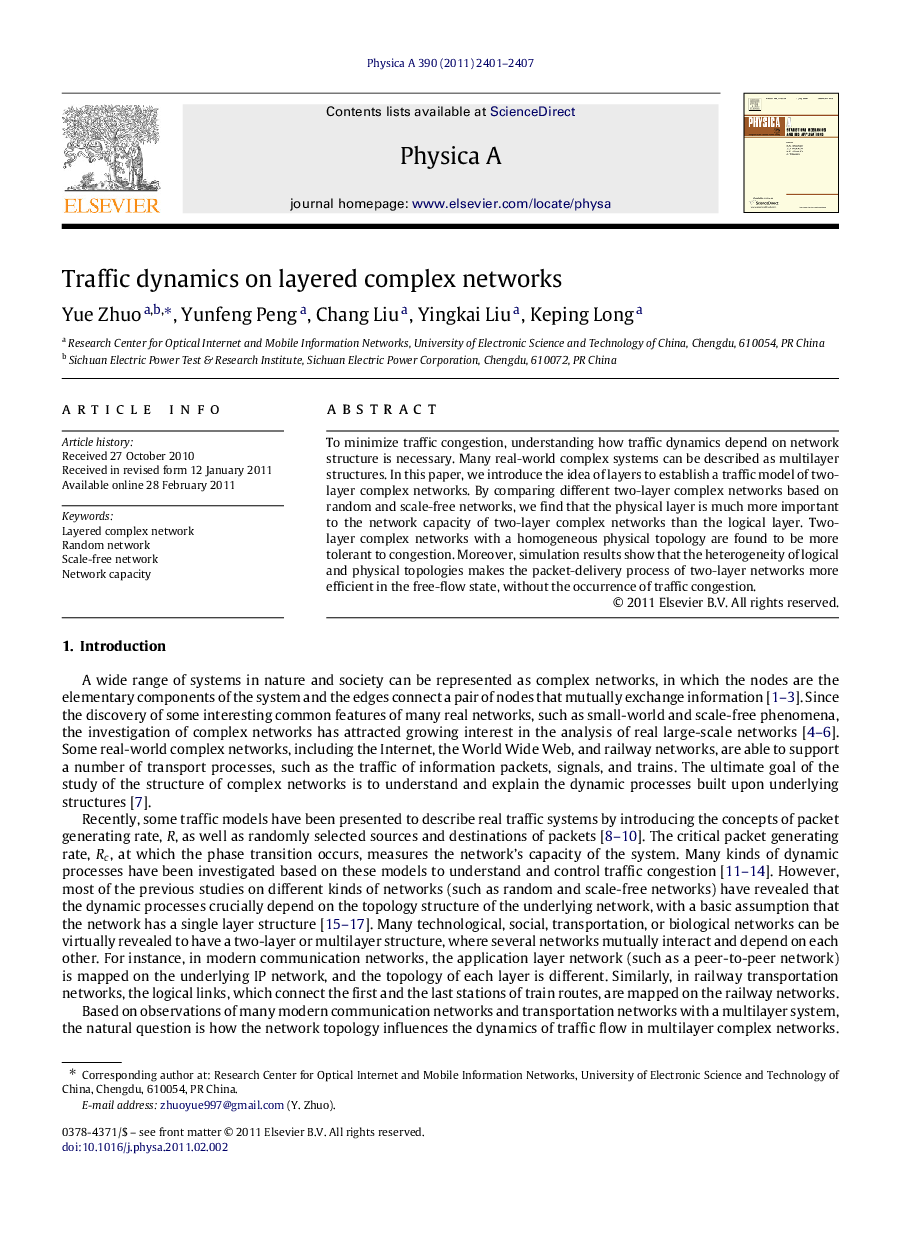| Article ID | Journal | Published Year | Pages | File Type |
|---|---|---|---|---|
| 978192 | Physica A: Statistical Mechanics and its Applications | 2011 | 7 Pages |
To minimize traffic congestion, understanding how traffic dynamics depend on network structure is necessary. Many real-world complex systems can be described as multilayer structures. In this paper, we introduce the idea of layers to establish a traffic model of two-layer complex networks. By comparing different two-layer complex networks based on random and scale-free networks, we find that the physical layer is much more important to the network capacity of two-layer complex networks than the logical layer. Two-layer complex networks with a homogeneous physical topology are found to be more tolerant to congestion. Moreover, simulation results show that the heterogeneity of logical and physical topologies makes the packet-delivery process of two-layer networks more efficient in the free-flow state, without the occurrence of traffic congestion.
► We study the traffic dynamics on two-layer complex networks. ► The physical layer is important to the network capacity than the logical layer. ► Two-layer complex networks with a homogeneous physical topology are more tolerant to congestion.
